
Бесплатный фрагмент - Techniques of Effective Learning
Introduction
A question that concerns many parents is whether or not they should help their children learn and how they can find the time for it.
In our project “Glad to Learn”, we teach parents how to help their children learn more effectively, delegate homework responsibility, improve memory, and reduce study time.
Unfortunately, parents are not always able to set aside time in their fast-paced lives to help their children with their schoolwork. Likewise, children do not always listen to their moms or dads without having something to say.
Some parents think that teaching their children themselves is out of the question for them.
In this book you will learn whether or not children should be helped with their learning process and how this can be done in a time-efficient manner.
Ideally, the main goal of an adult is to help the child organize their time and divide their energy.
Parents should not do their children’s assignments for them, give answers, or hover over them for hours making sure they write each letter correctly.
However, practice shows that this is what actually happens.
Parents sit with their children all evening doing homework, explaining the material, learning poems and foreign words, doing crafts and pictures.
The role which used to be fulfilled by the teacher is now being put on the shoulders of parents.
This naturally leads to the question, why do we even need school at all?
Unfortunately, it is not possible to incite quick change on the education system.
That is why we must accept the rules of the game and play by them.
Busy parents wonder how they can free up time for themselves instead of spending it all on teaching their children.
The first option is to find a good school which can be given full responsibility for educating their child, and thus leaving the parents out of the equation.
This only works well when the child can study in a school where teachers are invested in their students. Schools like this which also offer free tuition are becoming fewer and fewer with every year, while the number of private schools is increasing.
If you have the ability to send your child to such a school then do your best to send them there. The money that you will put into this kind of education will be paid off by the free time you will gain.
The advantage of this solution is that the responsibility for the results is taken on by the school.
The main disadvantage of this solution is the cost.
The second option is to hire a tutor.
The advantage of this option is that your child will be taught individually, and the tutor will focus on their specific problems. If you find a good tutor, they will certainly help with most of your problems and save you time.
However, this option has a few drawbacks of its own relating to the quality of tutors nowadays.
Furthermore, most tutors are interested in long-term work and will tell you right off the bat that the process will be long and costly.
The second issue is that once the tutor is removed, results are lost. All of the tutor’s knowledge leaves with them and the child only knows what they know. Without a tutor, students can rarely continue learning the subject further very well.
The third issue is that the parent must make a choice of which subject to give preference to if the child has problems with a large number of subjects since hiring a tutor for 8—19 subjects at one time is very wasteful.
The fourth issue is that no one will hire a tutor for subjects the child is doing well in. In the end, the child will only progress in their weak areas, and their most important strong points will practically stop developing.
The third option is to teach the child how to learn. As one famous cartoon puts it, “Better to learn all day and then fly for only half an hour.”
The advantages of this approach are:
The child will get a foundation of knowledge and skills which will allow them to memorize important information from the first try and process it and apply it. Later in the future, they will be able to at least feel like a fish in water in the world of information, and they will be able to understand the things around them.
Moreover, mental work is always paid several times higher than physical work.
A tutor simply gives your child a fish while you will be teaching your child how to fish. This way, no matter who the teacher is, your child will be able to easily learn and master any information, prepare for exams, receive scholarships for university, etc., without any interference and without your involvement.
The biggest disadvantage to this solution is that it requires setting aside additional time for the child to learn, as well as diving into the process yourself and helping your child make the first steps in the beginning.
There is simply no time or energy left to put in additional learning time into an already full schedule.
However, herein lies the most insidious problem of teaching children: the use of outdated methods of learning which take up significantly more time than needed.
It can be compared to chopping a tree with a dull ax or sawing wood with a dull saw. It requires more effort, but produces less of a result.
What you can do to help your child learn better:
Use methods for improving concentration
Use the general to specific approach and special schedule organizers (helpers) for presenting information
Use image-based principles for memorizing formulas, dates, definitions
Use techniques of structuring information for presentations, summaries, and recitations
Use techniques of delegating homework to the children
Use methods of memorizing foreign words
Use mnemonic devices
All of these techniques are taught in the book you hold in your hands.
You will learn the techniques of effective learning, how to work with information correctly. You will gain skills for quickly taking in new information. You will learn how to effectively help your children learn how to memorize a large amount of information over a short period time and how to do homework on their own. You will also free up time for yourself and fulfill your wishes while your children are learning happily on their own.
Happy Learning!
Reviews
I am not good at promoting things, but this is perhaps the best book for parents of young students. The book describes a large number of techniques for making the learning process easier. You no longer need to go in search of, collecting bit by bit, whatever might help you in the learning process.
Everything is included in this book:
How to memorize large amounts of information and difficult names
How to learn foreign words
How to correct mistakes in vocabulary words
How to increase reading speed
How to quickly summarize a paragraph, focusing on the main idea
How to remember numbers, dates, telephone numbers, and much more
Besides this, the book also describes the psychological aspects of learning.
How to talk with the teacher the right way
How to increase a child’s self-esteem
How to motivate, and so on.
Our brains (and the brains of children) are capable of a great number of things, we only need to know how to correctly memorize, reproduce, repeat, present. If we do this using specific algorithms then we will waste significantly less time and effort and have guaranteed results.
I am writing this with such certainty because I myself am studying and applying the techniques of effective learning and I can see they work.
Now my oldest child is only in preschool but we are already using some of the techniques with him.
“Green pen” for motivation
Mnemonic “Cartoon” for foreign words
Correct repetition according to the “forgetting curve” of Ebbinghaus for optimum memorization
Mind maps for structuring information and training connected speech
“Funnel” technique for eliminating mistakes
“Artist” technique for memorizing poems
And many others.
After trying these methods for myself and my child I am convinced that learning can be easier, faster, more interesting, and produce better results.
To all parents who see this, if you do more than just read this book and actually implement at least part of the recommendations in your life, you will immediately notice positive results and see how much the learning process of your child has improved in school.
It will boost your child’s school performance and self-esteem while at the same time reduce the time spent on homework.
Parents will spend less time stressing about the process and will save money on tutors.
Teach your child how to learn and it will be the best investment for your whole family.
Svetlana Grigorieva
I was fortunate to be able to read the book Techniques for Effective Learning. Encyclopedia for parents of schoolchildren. I could relate to every line and it brought back memories of my own school experience, causing me to analyze and rethink the motives behind the actions and teaching styles of the teachers. There were some things from the book which I had already applied instinctively myself back then, for example, associations, and these techniques have always worked. The book is laid out very nicely. I enjoyed the description of the four ways people take in information. It is very comprehendible and clear. It is written in a way that is very easy to read and understand with many examples of practical uses of the techniques. The book is a wealth of tools for teaching any school subject and more. It reveals how to set attainable goals and reach them, and also how to improve self-esteem, something some adults could learn as well. The descriptive mnemonics are truly marvelous. The most important thing is that they are easy to master and can be used in a playful manner. Practically any problem that a family could face when teaching a child is shed light on. The only thing left is to open the book to the right page and try to implement what is written in your situation. In a word, the book is wonderful. I am glad I have it.
Vera Zakharova
The current state of the education system can be summarized in one word: CHAOS. There is a complete lack of any actual kind of system. While some try to hold on to the Soviet system (at least there was something back then), others look five steps ahead and go in search of a new way of doing things. I don’t know about other students, but my son could not be interested by the Soviet system; they tried but it didn’t work :) We had to look forward. For a long time (two years) I searched for different approaches, methods, systems, and I found a lot in the American education system. Despite how Americans might be criticized, it was a necessary measure for me. I found small bits of information which strangely worked, and worked successfully. Thanks to these I later found myself on Renata Kirilina’s blog where she (which I am really thankful for!!!) describes and explains the innovative methods in detail, clearly and concisely.
The book Techniques for Effective Learning from A to Z, in my opinion, is the education system of the future. If anyone is looking five steps ahead then this is the book for them. All the methods work, and many I have already tested myself during lessons with my son. Some of the techniques in the book were like a new discovery for me, and we are sure to try them out.
I will definitely buy the paper version of the book as soon as it is out. I highly recommend it for any parents of school-age children.
Ira Greeva
I want to tell you about the book Techniques of Effective Learning from A to Z. Encyclopedia for parents of schoolchildren by Renata Kirilina and Sergey Kirilin. It is a dream come true! Finally there is a book which contains all known techniques for effective learning. I was very interested to read Renata Kirilina’s articles on VK and was worried that a lot of time would need to be spent finding the right article at the right time. Now everything is in one book with very concise headings, as always by these authors. My daughter is going into the first grade next year and this book is like a gift to me. I have become more confident and relaxed. I know how to help my daughter with her future in school.
The book is just great! It is difficult to even pick out some articles as they all contain very useful observations.
I regret not knowing a lot of it myself when I was a student and wasting a lot of time.
I can’t wait for the printed version. I recommend it not only for parents of school-age children but also to university students and school teachers!
Sveta Ryazanova
I have decided to review the book Techniques for Effective Learning from A to Z by Renata Kirilina. It is truly a wealth of information.
Although we already knew part of what was written and had implemented it in our lives and in the learning process (again from publications of @rkirilina’s “Glad to Learn”), we also discovered something new and intend on trying it and getting more results.
It is especially valuable that all the techniques are given in a playful format which is interesting for children.
It is a big advantage that all the techniques were created keeping in mind the individual psyche and maturity level of the children.
The information is given in a structured, albeit condensed, format. These guidelines should be enough for any parent who thinks and cares about their child to understand and apply to their own lives.
I recommend it!
Natasha Litovkina
The book Techniques for Effective Learning from A to Z is simply a treasure trove for parents who want their children to learn more easily and with interest. It contains many helpful techniques which make it much easier for children to learn. The step-by-step description of every helper explains what and how to do in the specific technique. I read the book in one go. I recommend this book to all parents. The advice in this book can help you make it easier for your child to take in information when learning, thereby helping them remember the information forever.
Svetlana Belykh
No 1 expert in teaching children effectively in school. Mom of two school-aged boys and one daughter. Renata started homeschooling her sons in 2016.
Worked her way up from teacher to principal of a public school and knows all the pitfalls of the education system.
Practitioner; all the techniques of effective learning have been tested by thousands of children.
Creator of the methods “The complex put simply” and “Techniques for effective learning”.
The students’ geography covers all of Russia, countries of the former Soviet Union, Europe, USA, and Canada.
Founder and director of “School for Smart Kids” and “School 60 minuts”
Author of the blog “Glad to Learn” http://gladtolearn.ru/blog/
How to develop a child’s mind and help them learn

Fundamentals to help you learn how children take in new information and develop new abilities and skills
If you are worried about the development of your child then remember that there are learning strategies and methods which can help them learn more easily.
I suggest a quick dive into the theory behind how the brain works and how new information, abilities, and skills are built into it.
Later we will look at the best learning strategies at every level of a child’s brain development.
First, though, here are some important facts:
Children learn by creating connections between brain cells which are called “neural pathways”.
The more often these neural pathways are used, the stronger they become. For this reason, practice helps improve skills.
Creating the circuit system of the brain
Every brain cell (neuron) looks like an ordinary tree.
When children learn information about the world, their neurons branch out and create connections between each other. The resulting neural pathways are similar to electrical wires. Each neuron can have several connections with other neurons.
These “wires” do not touch each other.
Instead, they release information in the space between neurons, known as “synapses”. The brain’s chemical elements (neurotransmitters) help the system communicate.
How neural pathways work
Each neuron pathway is like a schematic. When electricity goes through the circuit, it receives an answer.
For example, when you flip a light switch, the light turns on. Some brain circuits, like those for breathing and blood circulation, are already developed at birth. Other schematics are dependent on activity.
They need input to work, and the more input data they receive, the better they work. This input is more complex than simply flipping a switch.
This occurs for every experience and event a child goes through.
Sounds, sights, tastes, smells, as well as feelings and emotions help the brain release neurotransmitters and control these schematics.
Pruning or forgetting
Neural pathways which are frequently used become stronger. This is similar to a paved road versus an ordinary path.
Schematics which are not used become weaker and disappear over time. This process is called “pruning” or simply forgetting.
This is normal. Everyone has more schematics than they need. “Pruning” occurs gradually over one’s whole life.
Children’s minds are fairly flexible in order to constantly work to create new schematics and improve frequently used neural pathways. This process is known as “plasticity”.
Strength of plasticity
“Plasticity” is especially important for children. Their brains process information differently but do not always use the brain’s chemicals efficiently.
These differences make it more difficult to create or reinforce some neural pathways.
Teaching children the techniques of effective learning and information processing makes it possible to show children how to use their brain’s plasticity.
Children not only learn better and more easily, they also experience less difficulties and stress.
Learning through feelings
Children do not need to think about neural pathways.
This occurs naturally when they experience the world and learn about it.
The Swiss psychologist Jean Piaget created a well-known theory about how children develop skills of recognition and thought.
Initially children use their senses of sight, hearing, touch, taste, and smell to start establishing connections. They taste, shake, and throw items. They also start to roll, reach for objects, and in the end, crawl and walk.
All these actions help build neural pathways which control things like movement, sight, and language development.
For example, children start mimicking sounds which grab their attention.
Later, they continue tasting and discovering the world which surrounds them. They continue to move around to places they want to see. The brain strengthens these schematics and the child continues to develop.
Learning through speech
Between the ages of two and seven, language development increases with children learning to talk and understand more words and using more complex sentences.
This is a critical time to create a rich speech environment for the child.
At this stage, the more the child is spoken to, the more words they will use and learn. Likewise, the more new skills they will try, the more neural pathways they will form.
At this point, children can be more creative in how they play with objects.
For example, you might see your child using a big stick as a horse or turning a box into a rocket ship.
Social skills develop slowly at this age, as children are not ready to understand logic, reasoning, and other people’s views.
They often experience difficulty being around unfamiliar company and can likewise openly criticize or say what they do not like or comment on the behavior of other people.
Learning through logic
From the age of seven until middle school, children begin to think more logically.
At this stage children are able to make connections between things. They become “detectives” who are capable of seeing clues and able to connect them.
Socially speaking, children develop the ability to put themselves in someone else’s shoes and understand that actions have consequences.
At this stage, adults can support children by helping them think through things like the cause or effect of any event.
Learning through reasoning
Transitioning into adolescence, children start to think more abstractly and with more complexity.
They reason along the lines of “what if” and can picture the outcome of a situation.
Children are capable of solving and understanding more complex mathematics, learning chemistry and physics, understanding storylines more deeply, and discussing literature they have read.
Children can combine different kinds of skills to do more complex things like learn to drive or learn a profession.
The system of electrical wires in the brain becomes more complex with circuits that intertwine with other circuits so that all the skills can work together.
Main conclusions
New experiences help your child form neural pathways. Exploring the world helps the brain grow. Various learning methods and other strategies of intervention can help children develop new paths and acquire more skills.
There are things at each stage of development which you can do to help your child learn.
What you can do to help your child learn
— Study the techniques of effective learning. Learn how to structure text information, create “mind maps”, use the general to specific method, look for and remove mistakes, learn connected speech, and develop both sides of the brain.
— Work on motivation, interest, attention, and discipline.
— Improve memory and revise new information according to the “forgetting curve”.
— Develop imagination, learn to encode and decode information, learn to manage a working state.
— Identify the type of learning style (visual, auditory, kinesthetic, logical) and use the dominate style when learning.
— Do not give up. Look for ways specifically suited to teaching your child until you find one!
— Reduce the time spent looking for and choosing the best strategies and implement them using the program “Genius Child. Techniques of Effective Learning”.
Auditory, Kinesthetic, Logical, and Visual
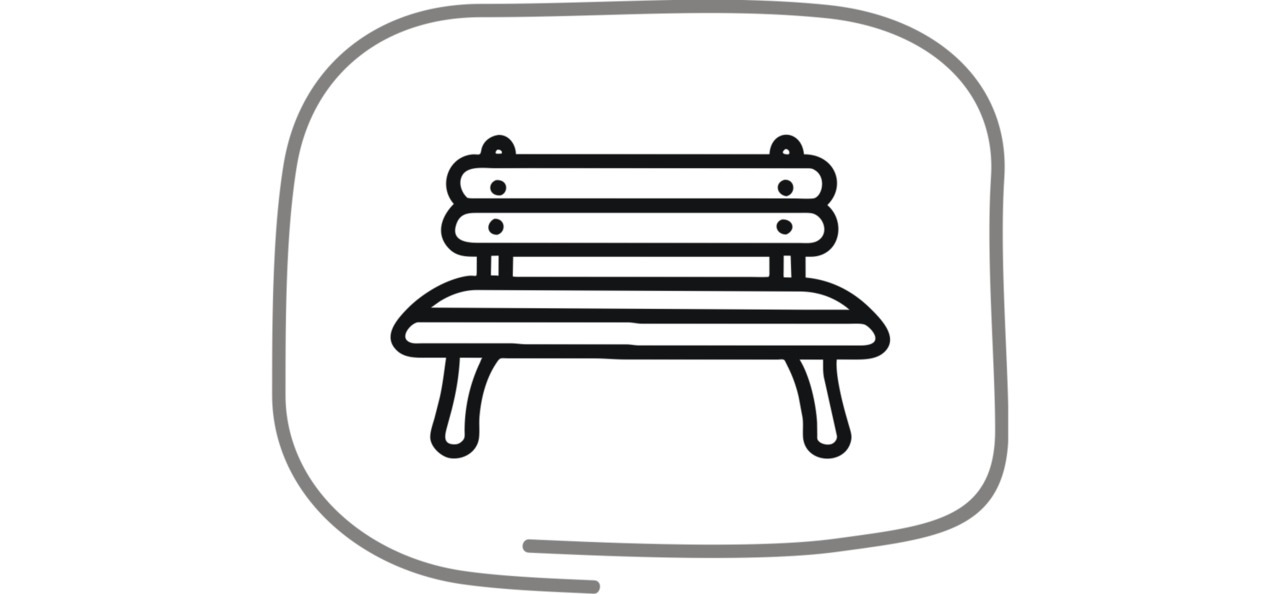
“VALK” technique. How learning styles affect learning
V — visual A — auditory L — logical K — kinesthetic
Learning through speech
Between the ages of two and seven, language development increases with children learning to talk and understand more words and using more complex sentences.
This is a critical time to create a rich speech environment for the child.
We have five sense organs. The right, creative, hemisphere of the brain is responsible for what these organs take in. We see, hear, touch, taste, and smell. A clear image which is formed immediately by several senses is remembered automatically and without effort.
If we try to remember something unemotionally, without recalling or picturing what we need to remember, or if we read a book without imagining each word, each sentence, then these processes become boring for us and require a lot of effort. When we read schoolbooks we do not get any pictures, and therefore they are difficult to read and require more work. Meanwhile, any genre of literature creates a film or pictures, and we do not think about it how fast we are reading and do not spend energy forming the images in our minds.
If we talk about how information is received, it is important to know that each person has four clearly defined basic scales of perception: hearing, tactile, visual, and logical. How developed any given one of them is tells us what type of learner the person is in general. We distinguish between for kinds of learners: visual, auditory, kinesthetic, and logical.
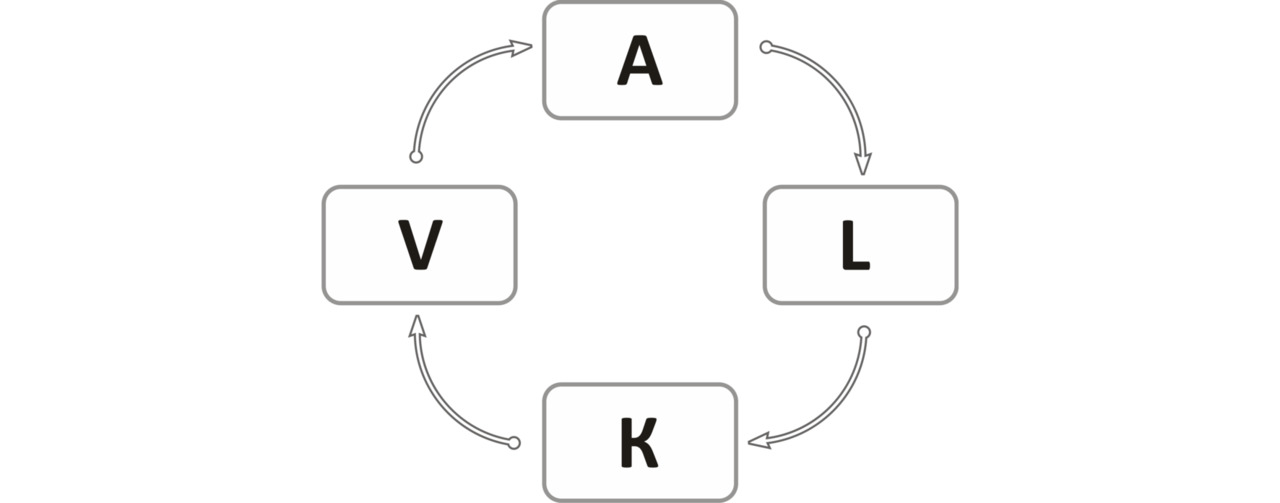
Learning styles
The largest group of learners is visual, ie., people who transform the majority of information into knowledge through sight.
Practically all visual learners talk using expressions like “Look”, “Let me show you”, etc. It is difficult for them to listen to directions of where to go, where left or right is, and so on. Generally speaking, they prefer to look at a map and only go once they are 100% sure of where it is.
Then there are kinesthetic learners who need to do something themselves before they can understand it. We could not teach kinesthetic learners to dance using our examples of “look”, “let me show you”, “watch how I do it”. Instead, they should repeat it themselves and master the physical movements, otherwise they will never learn it.
Logical learners understand clearly structured information and algorithms: 1,2,3,4. They only get a clear picture when they have information structured in this way. For logical thinkers, the surrounding world is clearly broken up into a hierarchy of objects.
Auditory learners are people who play with the tone, depth, and volume of their voice when they speak (all of which makes up the prosodic (intonational) side of speech). They love to listen and hear. Monotone, unemotional speech is boring and unclear for them.
Let’s look at each learning style in more detail.
We will look at a few criteria like how a person walks, they main way they take in information, what the easiest way to teach them is.
Of course, the learning styles are expressed in people to a greater or lesser degree.
It is important to figure out what kind of learner you are, as this influences your education. If the lesson (lecture, training) is designed with all four kinds of learners in mind, then everyone will remember and understand the information. If there is only visual aids used when teaching (posters, schematics), with monotone speech and no clear definitions of the structure, then the only ones who will remember the information are those whose visual intake is highly developed.
So, how can you know which kind of learner you are?
Kinesthetic learners typically move about quietly, slowly, unnoticed. For example, if a kinesthetic learner arrives late to the theater or to class, they will either not go into the room at all, missing the first part of the show or the lecture, or will wait until there is a break to go in, all in order to avoid drawing attention to themselves.
They take in everything through their senses and love warm, comfortable clothing. They care little about color combinations or matching clothes — comfort is key.
They prefer shoes without high heels which are comfortable and convenient. Kinesthetic learners do not care about fashion and style. This might mean buttons and zippers and items without accessories. Giving them clothes as a gift is not something easy and is almost impossible to guess. The design is of little interest to them; what they care about is if it is comfortable to wear or not.
They learn through doing. No matter how many times you repeat something to a kinesthetic learner using different kinds of voices (quiet, loud), or all the colorful posters you show them, they will not learn until they take it themselves and do it themselves. You can take their hand and help them, otherwise it will not be understood. They can only learn a series of actions by physically repeating them. In order to remember something they may have to write something down or redraw a map (image).
Auditory learners.Their prosody (form of speech) varies. They speak quietly, loudly, high or low, always using logical stress patterns. They love intonation and pay attention to it in others.
If they pass by and hear interesting, non-monotone speech, they will listen to it and become interested. Auditory learners should be taught using this play with speech. They do not like shouting.
They love to listen to speech similar to theirs. When arriving late somewhere, they will listen by the door and, when they think it is the right moment (change of presenters, pause, applause), they will quietly tiptoe into the room, trying not to draw attention to themselves. They will say hi if necessary but always quietly, in a whisper.
Auditory learners are few. Generally, this is found in combination with another learning style.
Learning styles can change if they are worked on. We can combine two or more kinds of learning styles, being auditory and kinesthetic learners at the same time.
Logical learners. All of us have at least at some point in our lives come in contact with a logical thinker. These meetings usually occur in institutes or universities. Albert Einstein was considered a logical thinker. Their speech is monotone. Lectors of this kind stand behind the podium, not thinking at all about whether someone can hear them. They structure everything. At the beginning of lectures they always first give a detailed plan with many sections and subsections. They love to use multi-leveled classifications: 1.1, 1.1.1., etc. Notes written during their lectures are clear and interesting, however, listening to their lectures is boring and uninteresting. They are excellent scientists and understand science very well. Taking exams with such professors is difficult. Their clothes are functional. One interesting example is the anecdote about Albert Einstein in which he sometimes would leave the house in different shoes (a sneaker on one foot and a boot on the other). When asked about the mismatched shoes he answered, “They are both shoes. The sole is the same height on both of them. On the left foot is the left shoe, on the right foot — the right. Both my feet are comfortable. I don’t see anything wrong here.”
Many logical thinkers also do not concern themselves with the color or matching pairs of socks. There is one version that says that this is the reason behind the student superstition of wearing different socks to an exam (from different pairs, possibly differing in color) for good luck. In other words, students no longer put pennies in their shoes to breeze through an exam but instead use the “Einstein Method” and just wear different socks (if it were shoes I am afraid it would have the opposite effect). Who knows, maybe it will help us all become a little more like Einstein.
If a logical thinker arrives late somewhere, they knock, wait for the right moment, like the auditory learner does, and follow up by giving a necessary explanation for their tardiness. “Hi, I am late because 1,2,3,4… May I come in or should I wait until the end of the lecture?” They can go either way. They give the lector the choice. If they can come in, they go in. If not, no problem, they wait. Unlike logical thinkers, kinesthetic learners do not even think about trying to go in. It is better for them to stay behind the door.
Logical thinkers have a clear algorithm for everything. All of their actions are split into specific steps, for example, even the act of cooking eggs is thought through to choosing the right pan. They have their favored route, usually the shortest, 50—200 steps shorter than the comfortable route. Statistically, they rarely change their habits.
Visual learners. this is the biggest category. They are recognizable by their fast and clear speech. Sometimes, it can be hard to follow their thoughts as they quickly change focus. Their speech is accompanied by many colorful expressions and emotional tone. Often in bright clothing and a hairdo, they enjoy taking care of their outer appearance. If a visual learner arrives late to a lecture they always allow themselves to enter at any moment. Knocking, no knocking, however they see fit. They enter loudly, attracting attention. They will not skip or wait until the end of the lesson due to being late. They might say “I’m sorry. Continue…”, etc. Unlike auditory learners who will wait for the right moment, they do not bother themselves with this. They go in as soon as they arrive. Visual learners look their conversation partner in the eye. They use the expression “look” in their speech. These are people who take everything in through their eyes.
You can figure out what kind of learner your child is by observing them, and then you will understand what you have to work on so that they fully take in the world around. Keep in mind that these four scales, and the perceptions described, can appear to different degrees. However, it is possible, and important, to identify the main learning style.
In our learning we will try to focus mostly on the visual route. However, for complete understanding it is necessary to use absolutely all types of learning styles.
What you can do to help your child learn
— Determine their learning style. When forming your system of education, take into account the main way they take in information.
— Develop the weaker learning styles.
Quick Results
“Staircase” technique. How to set an attainable goal

Now we will move on to discussing quick results and attainable goals.
At this stage it does not matter at all what kind of learner you or your child is. The most important thing is to set attainable goals for your child which they can understand.
Essentially, the learning process in the eyes of a child is like an endless staircase, leading to an unknown place. The result of learning lies in a horizonless future and cannot be seen.
You tell them, “Study hard, sweetie! Then you’ll get into a prestigious university, get a high-paying job, and everything in your life will be just great!”
These words are white noise to a child. They cannot see past one or two steps of the learning staircase, let alone the fifth, sixth, or further steps.
Children like to get fast results. Subconsciously, your child will not take far-off goals seriously. While you are drawing out a happy future for your child, their brain will simply not take it in. These goals will be like white noise for them.
The subconscious of an adult works in a similar way. Do you remember which plans you set for yourself a few years ago? Have you reached them all? Learn a language to a conversational level, exercise regularly, lead a healthy lifestyle, visit all the countries of Europe…
There are goals which are not quickly reached for a number of reasons. Slowly, they begin to turn into dreams, unfulfillable desires, thoughts of which no longer cause you to feel any emotions.
For this very reason, it is very important to set goals for your child which they can achieve in the near future so they will not turn into unfulfillable dreams.
How is this done? We will make a checklist of how attainable the goal is:
The goal should be close and tangible for the child
It is important to mark the achievement of goals in learning, i.e., another step in the staircase of learning (your child finished another year at school, did homework on their own, woke up without an alarm clock, got three A’s in school, etc.)
Encouragement. Reaching the next step of the academic ladder, (and not only) should give your child positive emotions. Imagine monotonously climbing a long staircase, you would very quickly become tired and stop enjoying the process, just like your child. However, if they find a small “prize” at each new step, then climbing becomes that much easier. There should be emotional “goodies”: kindness, extended praise, going somewhere your child has long wanted to go (the movies, water park, circus, children events), etc.
This will be motivation to move forward.
Praise can come in different forms. You could find the negative in everything and say things like, “If you want it, you can do it!” or “Couldn’t you have done that earlier? You must have been too lazy!”
This is similar to if someone said to you after you had climbed up a long staircase, “Why did you sit on the step? Couldn’t you have gone up more?” I assume you would not like it very much. It is hardly going to help you achieve your goal.
It is better to tell your child something like:
“Good job! I am proud of you, you finished your lesson in twenty minutes and freed up your evening!”
“Well done! Come here, I want to give you a hug!”
“Thank you for putting your dirty underwear in the washing machine and for picking them up yourself instead of throwing them about.”
Compliment your child for their accomplishments and for each step towards independence. Otherwise, they might not notice it themselves. It is important that you notice it and encourage your child. That way, next time they will consciously clean up after themselves, do their lesson more quickly, get their backpack ready on their own, and so on.
“I’m proud of you!”, “You did a great job!”, “I’m really happy”, these phrases truly help goals be reached.
Of course, we should remember fast results.
“Learn well and someday you will be successful” is not a good method.
“Learn now and tomorrow you will already be able to use this and see results” works much better.
The next stage is to motivate your child to learn certain subjects.
Nowadays not every class is told when or why certain school subjects might be needed. That is why it is important for you to do so. Have you and your child find the advantages of learning the subjects and what value your child will get when they apply this new knowledge. In this way they will start to understand why they are doing it. This helps reach attainable goals, for example, doing homework on their own.
It is not uncommon for someone to want their son or daughter to reach a specific goal, without realizing that it is in fact their own goal and not their child’s. For example, wanting them to get up easily in the mornings for school.
I will give an example from one of our students, Tatiana. She talks about how it bothered her that her child could not wake up in the mornings on time.
“My daughter doesn’t want to get out of bed at all! I have to go to her half an hour early, nag her for five minutes to get up, to get dressed. This happens no matter when she goes to bed. We argue every time. I get worried and tell her that she’ll sleep through her entire life and all the important events!” says Tatiana.
In other words, she set goals for her daughter which were very far from her.
After discussing the main principles of goal setting, Tatiana changed her tactic. She broke up her goal (of her child waking up to the alarm clock and getting ready for school on her own) into shorter, easily attainable steps for her and her daughter.
The first step was to get up in the morning from the very beginning. Look at how the goal transformed from “always and immediately” to “one time tomorrow”.
Tatiana then did the following: she bought a lot of small trinkets and sweets ahead of time. When she went to wake up her daughter the next morning she told her, “If you get out of bed right now, you will find a surprise which I’ve prepared for you! I won’t tell you what it is, you should find it yourself.”
Her daughter understood that if she got up right away, made the next step, then she would get a surprise. Her daughter liked it, “Mom, will you wake me up the same way tomorrow?”
They played this game together for a while.
The next goal Tatiana set for herself was for her daughter to get up in the mornings on her own, without having to go to her and wake her up. They agreed that a surprise would be waiting if she woke up to her alarm clock on her own. After two weeks, her daughter learned to do this.
Next, the mother changed her system of encouragement. For the prize, she offed walks together or an event her daughter wanted to attend. They made their way like this to their bigger goal, with small steps which were tangible for her child.
Any goal should be gone after in a similar fashion. Break it down into steps and take your time making them, getting satisfaction from each step. After all, an endless tiring journey with an unknown end is unlikely to lead anywhere.
What you can do to help your child learn
— Set attainable goals which are tangible for your child.
— Break goals down into steps in order to accomplish them. Visualize a “staircase”.
— Use constructive praise and track progress.
Confidence
“Garland” technique. Five ways to boost your child’s self-esteem
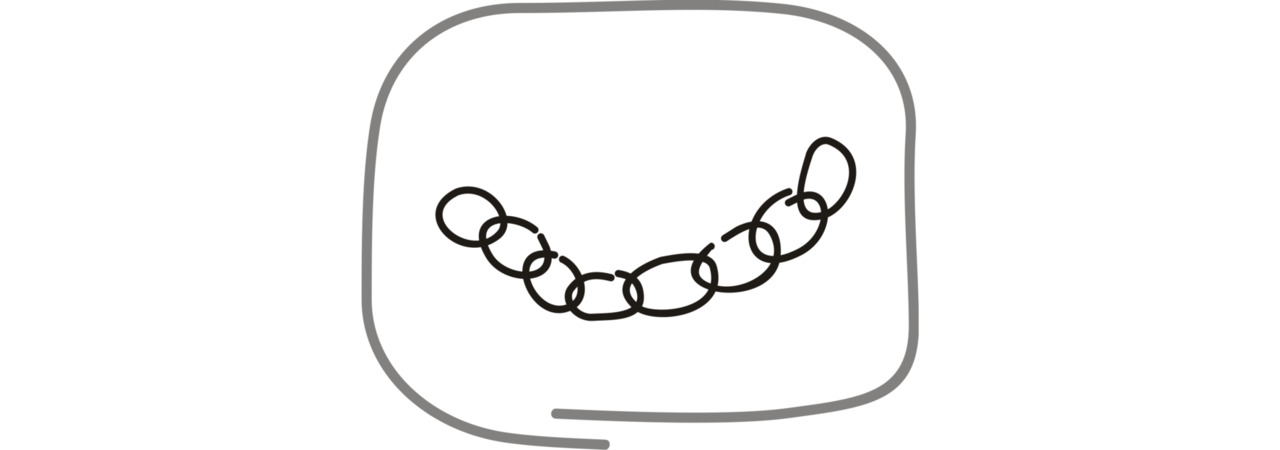
Children often loose confidence in themselves when they start school and in the learning process. Parents then face the problem of how to raise their child’s self-esteem.
Children find themselves in an environment of complete evaluation and, consequently, are subjected to being compared not only to themselves but with ideals, standards, and other children.
If something does not work out with a child then he may start to put in half the effort, call themselves names, or avoid any difficulties, become overanxious or unnecessarily emotional, and even cry from not being able to accomplish something.
It can be quite difficult sometimes to help a child gain confidence. However, there is an easy 5-step system which can improve your chid’s self-esteem.
First, though, let’s consider why children get low self-esteem.
Before the frontal lobes and awareness turn on (13—14 years old), children see themselves as individuals through a prism of their surroundings.
If a child is told “you are dense, you are hopeless, you are irresponsible, you are stupid, you are sloppy, you are lazy,” etc., they will start to believe it and become it.
Adults always have an impact on children. If a teacher at school or parents express such judgments towards a child, then it will affect the child’s life and the life of the family as a whole.
There are four ways of raising a child: “you are bad, the world is bad”, “you are bad, the world is good”, “you are good, the world is bad”, “you are good, the world is good”.
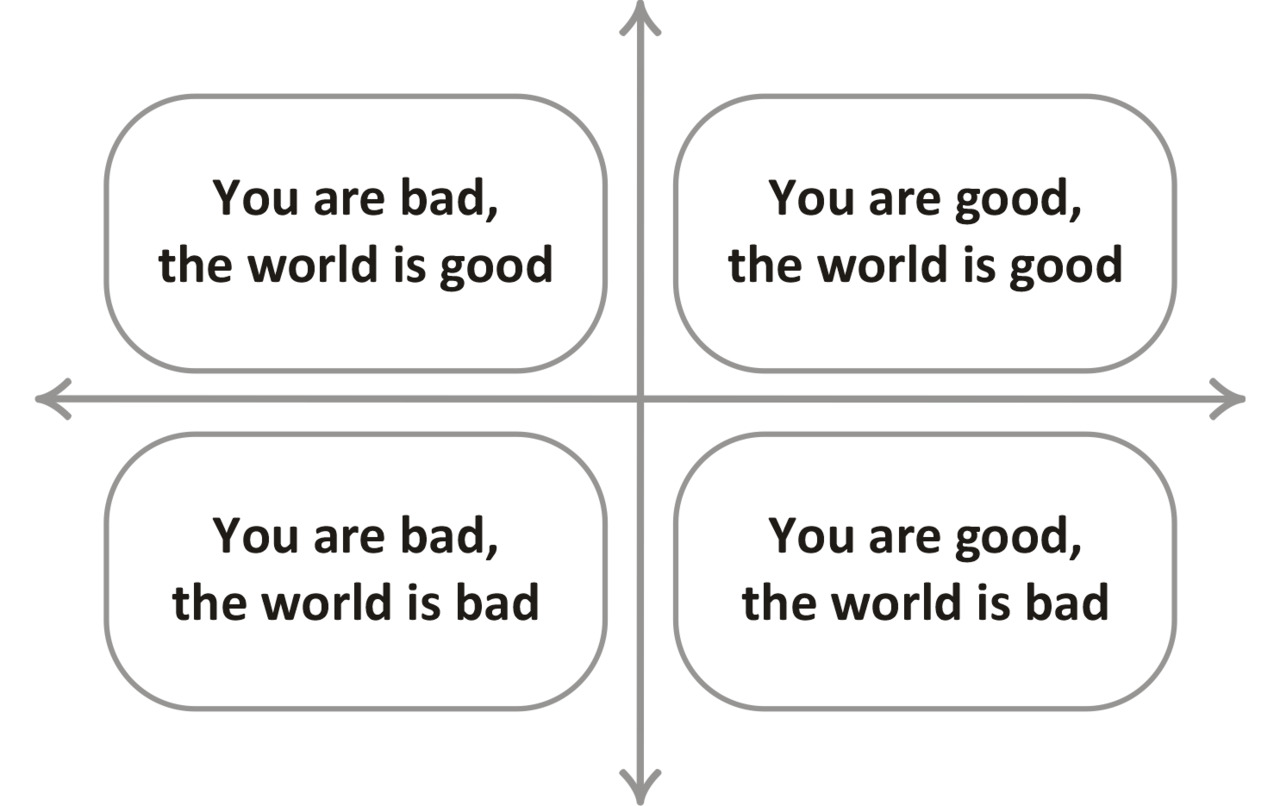
Raising a Child with Mindful Communication
Raising a child with the first, second, and third mindset lowers their self-esteem and kills their strive at its root.
Typical phrases of the “you are bad, the world is bad” model are:
— “If you don’t study, no one will hire you.”
— “If you can’t read, you will just become a janitor.”
— “If you don’t write, you won’t even be able to get a passport — they simply won’t give it to you.”
— “If you can’t count, all the stores will rip you off.”
— “If you are illiterate, what will become of you? Life will be very difficult for you.”
— “How long do you have to sit and do those lessons, are you stupid or something?”
— “You read so slow! At this rate, you’ll hardly move on to the next grade.”
Typical phrases of the “you’re good, the world is bad” model are:
— “You confused the syllables? No wonder, look at how it’s written, even adults would struggle with it.”
— “You read unclearly? Well, whoever needs to understand will understand.”
— “Maybe you do it slowly, but at least you do it on your own. Don’t worry, you can listen to stories, how fast you read doesn’t matter.”
— “I’d like to see the authors of the textbooks.”
— “I don’t agree with their methods at all.” (Said in front of the child)
— “Don’t listen to anyone, I know you read better than the rest.”
— “Don’t take it to heart, you’re smart and they are ignorant.”
Typical phrases of the “you’re bad, the world is good” model are:
— “What, you mixed up the syllables again? Dasha read it without any mistakes!”
— “At your age, I could read fast and got all A’s.”
— “Look at you, reading syllable by syllable. Meanwhile, all your classmates are already reading fluently.”
— “You read so badly, everyone will move on to the next class and you’ll stay behind for another year.”
— “What, you can’t even remember the times table for two? Everyone else has already learned it for nine.”
— “What’s with this chicken scratch! All the letters are crooked, mistake after mistake, look at how nicely Peter and Vanya write.”
— “If a person is told 100 times they are a pig, they will start to oink like one.”
For this reason, the first step is to try to create a system of raising children using the fourth model: “the world is good, you are good.”
In this model, phrases like the following are used when talking to the child:
— “Good job, you can do it. If you have questions or problems, someone will help you.”
— “Know that I believe in you! You will have strong opponents at the competition, but I’m sure you can do your best.”
— “Well done! Yesterday you read 30 words/min., and now you read 34. You’re making progress, good job.”
— “You’ve already memorized the times table for two. I’m happy for you. I’m sure you can memorize the rest. But that doesn’t mean it will memorize itself for you.”
— “Look how nice your letters A and O turned out. Let’s try to write the next ones just as nicely.”
— “You mixed up the syllables. Let’s try to find where they belong.”
— “The more you put into something, the bigger result you’ll get.”
The second step is to find your child’s strengths.
A child’s strengths may be obvious or not obvious, big or small.
The best way to do this is to take narrow pieces of paper and list various qualities which could generally be counted as a person’s strength.
Personal qualities, social skills, communication skills, knowledge, math skills.
Next, sit down with your child at a table and ask them to help you choose the qualities your child already possesses. In order to make it easier for you to make a control list, you can use the program “Garland”. You will find there a list of strengths divided into categories. The only thing left to do is to print it out and choose with your child which qualities they have.
The third step is to visualize achievement.
The best way to confirm a child’s success is with a tangible result — a diploma, award, any physical confirmation of words.
For this, you can have a table of accomplishments or records where you mark, for example, their best result in reading.
Likewise you can make a garland of your child’s strength, which you determined previously, and attach ribbons together.
Hang the garland in a visible place in the child’s room (near the bed or above the desk).
Then, every time they walk by the garland, your child will get a visual confirmation (reminder) of your words.
The fourth step is to constantly mark progress.
Have a look once or twice a week at the ribbons you did not choose and see which ones can be added to the garland. You can also add new bits of knowledge which your child gained during this period.
This method of improving self-esteem is not only simple but important.
The fifth step is to pay attention to your child’s interests.
Your child’s self-esteem will increase when they are doing what truly interests them.
Your child may not know right away what they really like. Finding out what it is might take some time, but it is important to do.
It may mean having to put off your own dreams of them loving football or becoming a great artist, but as soon as your child finds their own passion, you will get a happier and more confident child.
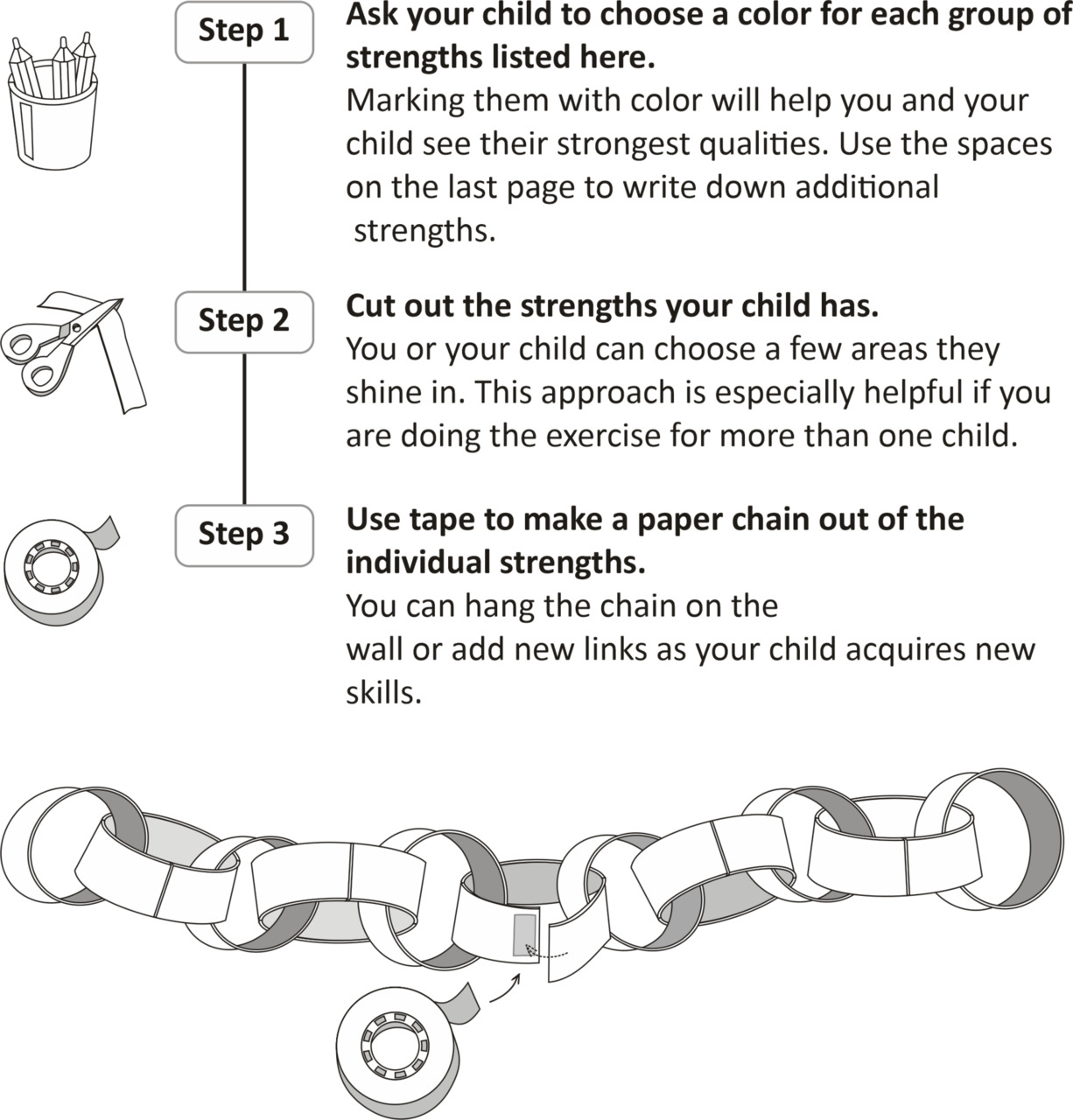
What you can do to help your child learn
— Do not place unwanted labels or roles onto your child, even if your intentions are good. Instead, encourage them to change. It is better to show them that they can do a lot and you are ready to help.
— Determine what your child’s strengths are by using the helper “Garland”.
— Visualize achievements.
— Mark progress.
— Take into consideration your child’s opinion and interests.
This way your child will have a worthy opinion of themselves, will not be afraid of making mistakes, and will go forward and take responsibility for their lives.
He will be able to set goals and reach them no matter what and whatever the circumstances.
Ready solutions and why they are needed
“Homework agreement” technique

As a rule, we prefer prepared, tested solutions, and avoid using new ones. This gives clear, expected results, which is why this model of adult behavior is understandable and comfortable.
After all, why should we, on the one hand, complicate our lives looking for an answer if we can ask someone and get a response. On the other hand, it is a sort of guarantee of a definite result.
However, you should not try to make your life and your children’s lives completely easier by giving them with ready solutions from morning till evening.
“Where’s the food?” — “In the fridge.”
“Mom, what should I wear?” — “Put on your blue pants and the polka-dot shirt.”
“Mom, I’m thirsty.” — “Here’s some water.”
“I can’t solve this problem.” — “Here, like this…”
And so on, giving your children an immediate solution. This is the first step, the second, the third…
“Where are my shoes?” — “Over there by the door.”
The list could go on forever.
Are you familiar with this situation?
We suggest the following exercise:
Keep an observation journal throughout the day where you write down how many times your child gave you the responsibility of something and you willingly took it.
You gave a ready solution. You thought it through instead of them. You showed them that is was not that important for them to think and make decisions. They can just go along until someone makes the decision for them. Children should not always be given ready solutions. It is important to “delegate” the learning process.
One common example is the problem of homework.
Making the “homework” agreement is a good method to take away some of the stress and avoid fighting about homework.
It is also a way to guarantee that you and your child both know your duties.
What is the “homework” agreement?
The “homework” agreement is an agreement which details what you and your child will do to ensure that homework will be completed on time and done well.
It looks at problems which are specific to the homework of your child.
For example, if your child has problems with time management, you can show the times of day and the time when your child will do their homework.
If your child frequently comes to you for help more than you think they should, you can indicate when and how you will help your child complete their homework.
The “homework” agreement of your child can also mark awards and consequences for either successfully completely or not fulfilling the contract.
How can the “homework” agreement help your child?
Developing useful habits and rituals is an important part of learning. These habits do not always occur naturally; they do not appear on their own.
The “homework” agreement can help reinforce your child’s skills and is created to help get your child accustomed to good habits.
How to use the sample of the “homework” agreement.
You can use the agreement immediately after downloading it and filling it out. Likewise, you can indicate additional points which meet the unique needs of your child.
Keep in mind that you may need to revise the agreement in case of any changes to the work load of your child or if something does not work as you expected after a week of using it. For these purposes, corresponding points are provided in the contract.
What you can do to help your child learn
— Avoid ready solutions.
— Make an agreement for completing homework.
Long-term memory
“Wunderkind” technique. How to revise information correctly
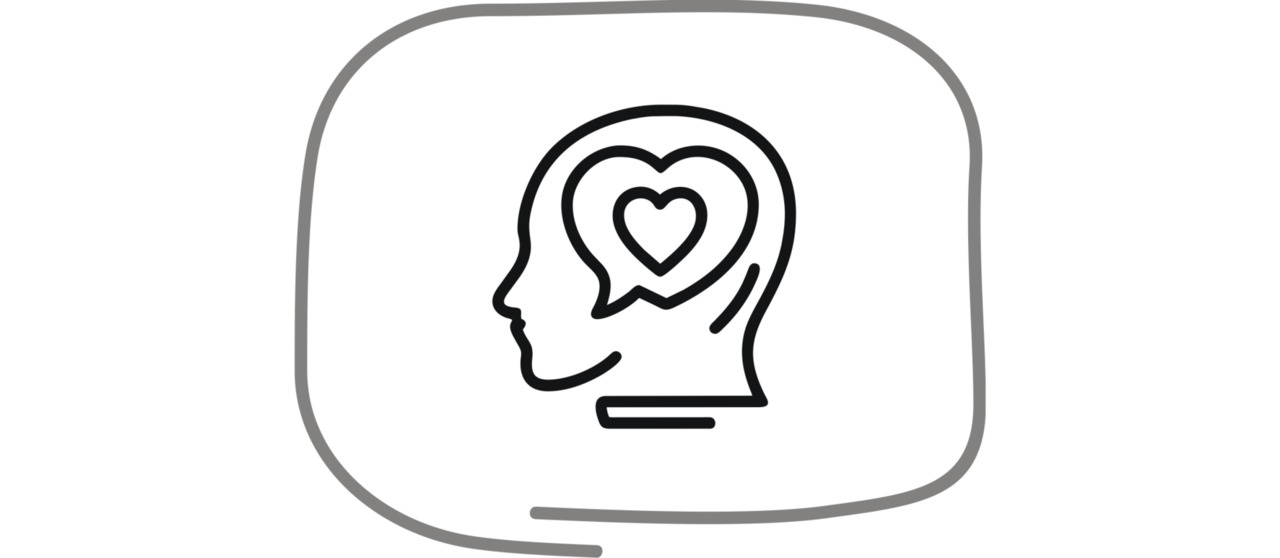
Most parents and children look past the main mistake of learning and are not even aware of it.
When I worked as a head teacher, I often heard the conversations like the following:
“We were studying all evening yesterday! He told me everything. I don’t understand why he has a bad grade again!”
“She knew it yesterday! It is impossible that a kid knows and recites everything one day, and the next day they’ve forgotten!”
My response is: it is possible. In fact, material is forgotten just as easily independent of how it was memorized.
When children are given something to learn at home, not all parents know or use mnemonics and other effective learning techniques.
These techniques can make learning the alphabet, multiplication table, or biological classifications much easier, while using the classical method of cramming for a simple assignment can take up the whole evening.
In both the first and second case, the child forgets the material they learned at practically the same rate.
The German scholar Heinrich Ebbinghaus showed that using mnemonics makes the memorization process easier, but it has no affect on the rate at which the learned material is forgotten.
He revealed through experiments that 60% of new information is forgotten within the first hour.
This means that when a child works on their homework all evening and has their parents check, both sides are sure that they will certainly get a good grade the next day in school.
However, once at school the child may not remember even half of the material.
In order for this not to happen, it is important to know, no matter which methods you learn with, the equally important value of how you or your child revises information.
Ebbinghaus dedicated his life to this and revealed that the best method for revising is as follows:
The first repetition should be immediately after reading the new material.
The second repetition should take place 20 minutes after the first repetition.
The third repetition comes 8 hours after the second.
The fourth repetition is then 24 hours after the third.
It turns out that revising information correctly is more than half the success of learning. This is because revising incorrectly means the learned material will quickly be forgotten.
What you can do to help your child learn
— Revise information the right way.
How to revise so it is worth your while if you have two days:
The first repetition should be immediately after reading the new material.
The second repetition should take place 20 minutes after the first repetition.
The third repetition comes 8 hours after the second.
The fourth repetition is then 24 hours after the third.
If you need to remember for a long period:
The first repetition should be immediately after reading.
The second repetition should take place 20—30 minutes after the first repetition.
The third repetition comes 1 day after the second.
The fourth repetition is 2—3 weeks after the third.
The fifth repetition is then 2—3 months after the fourth.
If only there were no mistakes!
“Funnel” technique. How to get rid of mistakes in learning
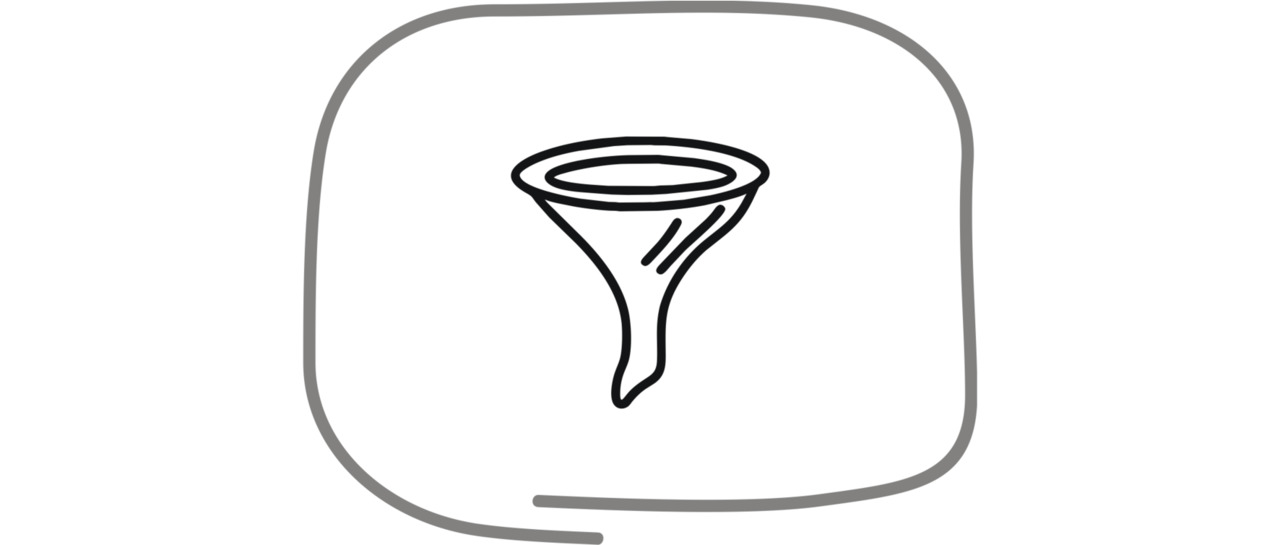
Being sure of the results plays a very big role in our lives and in our actions (and overall on our confidence and desire to do something). Whether it is being sure of a positive outcome or of a negative outcome, there are three ways to be certain of something: completely sure of success, doubt, and expected failure.
In the first option, we know very well that we are right.
For example, you have been convinced that you broke traffic rules by not having your parking lights on during daylight hours. You can confidently say that, “Yes, I broke the law. I know and understand, and according to traffic laws the only punishment for this is either a warning or a $5 fine, not the $15 you named.”
The second option is that you know but have doubts. You are more or less sure.
For example, you know that you can go on a green light, but you are not sure if you are allowed to go on a yellow. “How do you spell ‘fulfill’? there are definitely two l’s somewhere, but in the first place or the second?” and there you sit full of doubt.
The third option is when we do not know at all and are not sure of ourselves.
In fact, basically everything in education comes down to finding and revealing these two points in children: doubt and ignorance.
Tests are well designed for this. Tests do not show strengths; they find mistakes.
The most important objective of effective learning is to know how to turn doubt and drawbacks into something positive.
The “funnel” method works on mistakes.
Let’s look at this method using the simple example of learning vocabulary words.
In fifth grade, children learn 300 vocabulary words during the year.
Step 1 — find doubt and missing points of knowledge.
Dictate words to your child from the wordlist at the end of the textbook and ask them to spell them out (they do not have to write them down).
If your child spells the word quickly and correctly then nothing needs to be done.
If your child is unsure but answers correctly then you put a tick next to the word.
If they are unsure and answer incorrectly, you put a tick.
If your child makes a mistake, you put a tick.
Step 2 — count the number of ticks.
For example, our student Marina and her son had 59 words with mistakes (or doubt) out of 300. We will use these words in the next steps.
Step 3 — use the method of “bringing words to life”.
In order to remember a vocabulary word you need to picture it in your mind and add a word to the resulting image which starts with the letter we are trying to remember.
We all know the alphabet: a — apple, b — banana, c — cat, etc.
There are a few kinds of mistakes which can be made when writing vocabulary words. The first is when the child mixes up letters (z instead of s; f instead of ph). The second kind of mistake is when there are double letters, like two c’s or two l’s, and the child writes only one.
When working on mistakes of the first kind where you simply need to remember a letter, you can try to do the following:
The first step is to picture the word you need to memorize as it is.
For example, the word “orange”. You and your child picture a normal, round orange. This is the first step. We always have some kind of reaction to the word “orange”. You will picture a little orange. Whether it is on a plate, in the air, or in your hand does not matter.
The second step for this word (how we can remember it) is to add a strong reaction, the right letter, to it. For example, your child thinks that “orAnge” is written with an i “orInge”.
We need to remember the letter a. What word starts with an a? Either you or your child can suggest that “airplane” starts with an a. Then you need to very clearly picture it and say, “Let’s imagine that there is a family of oranges flying in an airplane…”
Maybe your child does not know another letter in the word, and thinks that it is written “oranj”
In this case, do not just picture an airplane, but picture an airplane being flown by a giraffe (giraffe starts with g). The giraffe is flying an airplane full of oranges. You can have a giggle, imagining oranges on a airplane which is being flown by a giraffe.
Memorizing double letters is done differently. You could picture for example “two cats eating a piece of broCColi”.
However, this is a lot less effective for memory because we are not good at reading double letters.
That is why, when it comes to double letters, agree with your child on what quality you will associate with the word.
For example, I have the same image in mind for double letters as I do for single letter except in a medical coat.
Imagine for example a cat in a medical coat. If “broccoli” is written with two c’s then it is not just a cat eating the broccoli but a cat in a medical coat. If we want to remember where the word “fulfill” has double l then the single l is simply a lion and the double l is a lion in a medical coat.
We will take the word “fulfill”
Picture a group of lions going to the theater to “fulfill” their dream of becoming actors. In order to get inside, they have to go through the narrow doorway. Since lions are big, they cannot all go in at once and instead enter one lion at a time (since there is only one l in the first case). Inside the theater there are already two lions. One of which is wearing a medical coat.
How does it work? When you write a word, you will remember the stimulus reaction at that moment (the picture brought to life with lions) and a metamorphosis begins. The correct image forms, and it is in the bag!
Step 4 — checking.
20—30 minutes after “encoding” the words you need to test them out.
Give your child a dictation of only the words you ticked.
Mark again any words with doubt or mistakes and skip words that your child has remembered correctly.
Step 5 — count the number of “mistakes”.
Step 6 — reinforce associations.
Continue steps 4—6 until there are no mistakes.
The goal of the “funnel” is to only deal with the mistakes, catching them and working on them. You will turn your doubt and mistakes into something positive.
In the same way you can and should work on the times table.
The times table contains 100 examples in total, 36 of which are unique.
Test your child.
For example, you child makes 32 mistakes out of 100.
Your child might think they do not know the times table at all, but you can tell them, “That’s only 32 out of 100; you already know 68!” Your child will think, “Oh, yeah. That means I’ve learned more than half!”
Later on you will only work on the mistakes on the times table.
What you can do to help your child learn
— Find vocabulary mistakes and mistakes in the times table.
— Work on the mistakes using associations.
— Check and find again the “mistakes and doubt” until there are no mistakes left.
Desire to Learn
“Price <Value” technique. Building inner motivation

During our “genius child” training we always get questions about children’s desire or lack of desire to learn, and parents asking “How can I make her/him love learning?”
I often answer the question with another question, responding with, “Do you really think it is possible to make someone love something?”
In reality, you can either make your child do something (in which case there is no point in worrying that your child is doing it reluctantly) or your child will love school on their own.
All you can do is simply help your child love the process of learning and help them crave knowledge.
In order to do this, you need to simplify the learning process for your child (so that it is not difficult) and increase the interest and value of learning (so that they enjoy the process).
The fact is that inner motivation is different for adults and children.
Бесплатный фрагмент закончился.
Купите книгу, чтобы продолжить чтение.